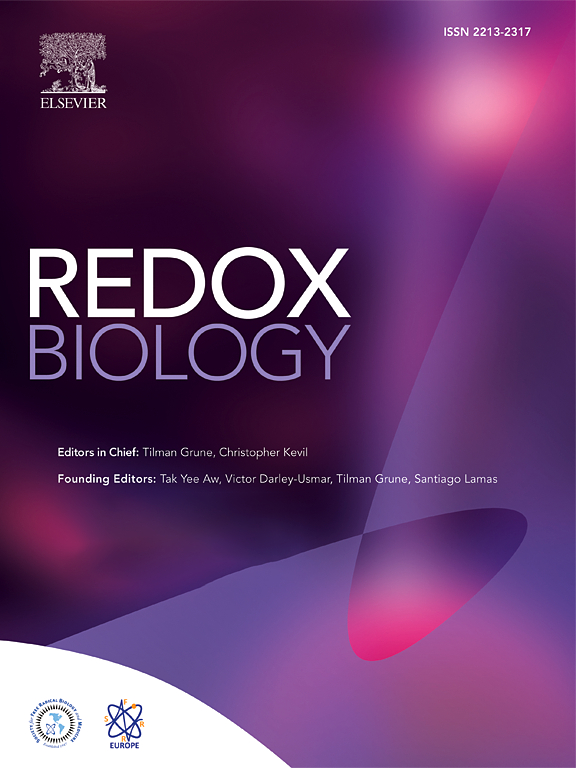Association between redox biomarkers, DNA damage and aerobic capacity before and after physical stress in young men
IF 10.7
1区 生物学
Q1 BIOCHEMISTRY & MOLECULAR BIOLOGY
引用次数: 0
Abstract
The interaction of reactive molecules with proteins, lipids and carbohydrates results in the formation of compounds generally called redox biomarkers. It is widely recognized that high intensity exercise results in an increase of oxidative stress which in turn induces DNA damage. However, aerobic trained individuals seem to be less affected than untrained individuals. We previously showed that exercise-induced DNA damage is indeed higher in untrained individuals compared with trained individuals. But to which extent redox biomarkers are associated with DNA damage and how both are associated with aerobic capacity remains unclear. Therefore, we measured well-established redox biomarkers in plasma from young healthy volunteers before and after exhaustive exercise. We found that aerobic capacity, as measured by the level of VO2 peak, is negatively associated with glyoxal, methylglyoxal and 3-deoxyglucosone concentration in plasma before and after exhaustive physical exercise. In contrast, protein carbonyls, 3-nitrotyrosine and malondialdehyde were not associated with aerobic capacity. Interestingly, glyoxal was positively associated with DNA strand breaks in immune cells before but not after exhaustive exercise, indicating a beneficial effect of a high aerobic capacity on DNA integrity. These results provide a potential mechanism of how exercise protects against cardiovascular diseases, diabetes and cancer development.
年轻男性生理应激前后氧化还原生物标志物、DNA损伤和有氧能力之间的关系
活性分子与蛋白质、脂质和碳水化合物的相互作用导致形成通常称为氧化还原生物标志物的化合物。人们普遍认为,高强度运动导致氧化应激增加,从而导致DNA损伤。然而,有氧训练的人似乎比未训练的人受影响更小。我们之前的研究表明,与训练有素的人相比,未经训练的人运动引起的DNA损伤确实更高。但是氧化还原生物标记物在多大程度上与DNA损伤相关,以及两者如何与有氧能力相关仍不清楚。因此,我们测量了年轻健康志愿者在剧烈运动前后血浆中成熟的氧化还原生物标志物。我们发现,以VO2峰值水平衡量的有氧能力与运动前后血浆中乙二醛、甲基乙二醛和3-脱氧葡萄糖酮浓度呈负相关。相反,蛋白质羰基、3-硝基酪氨酸和丙二醛与有氧能力无关。有趣的是,乙二醛与免疫细胞的DNA链断裂在剧烈运动之前呈正相关,而在剧烈运动之后则没有,这表明高有氧能力对DNA完整性有有益影响。这些结果提供了运动如何预防心血管疾病、糖尿病和癌症发展的潜在机制。
本文章由计算机程序翻译,如有差异,请以英文原文为准。
求助全文
约1分钟内获得全文
求助全文
来源期刊

Redox Biology
BIOCHEMISTRY & MOLECULAR BIOLOGY-
CiteScore
19.90
自引率
3.50%
发文量
318
审稿时长
25 days
期刊介绍:
Redox Biology is the official journal of the Society for Redox Biology and Medicine and the Society for Free Radical Research-Europe. It is also affiliated with the International Society for Free Radical Research (SFRRI). This journal serves as a platform for publishing pioneering research, innovative methods, and comprehensive review articles in the field of redox biology, encompassing both health and disease.
Redox Biology welcomes various forms of contributions, including research articles (short or full communications), methods, mini-reviews, and commentaries. Through its diverse range of published content, Redox Biology aims to foster advancements and insights in the understanding of redox biology and its implications.
 求助内容:
求助内容: 应助结果提醒方式:
应助结果提醒方式:


